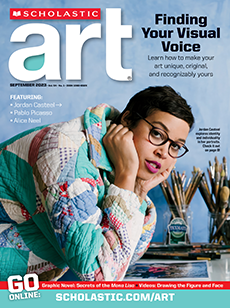Some messages are difficult to express with words. That’s where artists come in. A striking work of art can turn an event that seems distant into a personal experience. Art can make abstract ideas more relatable. The artist featured here uses his work as a tool to make complicated topics more accessible.
Born in 1967, Olafur Eliasson (OH-la-fer el-EE-ah-suhn) grew up in Iceland and Denmark. As a child, he studied art with his father, who was also an artist. In the early 2000s, he realized he could use art to communicate about humankind’s relationship with nature. He often collaborates with architects and scientists to build his installations.
Some messages are hard to share with words. Art can make complex ideas easier to understand. Artist Olafur Eliasson (OH-lah-fer el-EE-ah-suhn) uses his work to invite people to think about the environment.
Eliasson was born in 1967. He grew up in Iceland and Denmark. He studied art with his father. In the early 2000s, Eliasson realized he could use art to share ideas about humans’ relationship with nature. He often works with architects and scientists to create his installations.
